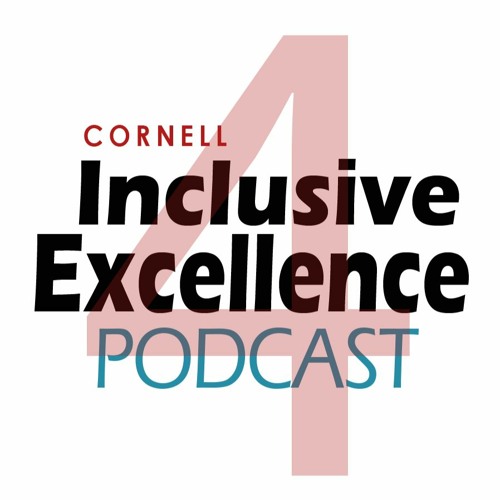
If you want to teach in Connecticut, you should know what it takes to get a teaching license. After completing your bachelor's degree, you will need to train as a teacher. This could take from four to six year. However, some programs might take longer. Be sure to research programs before choosing one. Check to see if they offer accelerated options and transfer credit, and if they have specializations in subject matters and bilingual education. It is also worth checking if they offer distance-education.
You can become a Connecticut teacher
If you are interested in teaching after you have finished your undergraduate degree, you can get your initial educator certification. Next, you will be able to apply for endorsements in certain educational fields. Connecticut will also accept teaching credentials from other countries. For more information on the qualifications required, contact Connecticut's department of education. Among other things, you should complete a state-approved teacher preparation program. You should also contact multiple schools before you make a final decision.

Connecticut's teacher preparation programs provide experience and training in the subject and grade levels you are looking to teach. Connecticut offers an alternative route to teacher certification (ARTC) to assist students in obtaining licensure. The program requires students to earn a minimum of six to 12 semester credits in field experience and to teach full-time for ten weeks.
What are the requirements to get a teaching permit?
For Connecticut to obtain a teaching license, there are several requirements. First, applicants must hold a bachelor’s degree from a regionally-accredited institution. The applicant must pass a standardized exam such as the PII. An applicant who does not have an accredited degree must have credentials evaluated by an agency that is approved by Connecticut State Department of Education (CSDE). After passing the test, an applicant must complete a fieldwork experience and professional course work in education.
Successful candidates must also complete at least 90-days of teacher training. Then, he or she must apply for Initial Educator Certification from the district where he or she will be employed.
Average salary for a ct teacher
Connecticut teachers earn an average $30,000 per year. Although it is less than the national average, the state's teacher salaries are still comparable to other professions. Teachers can expect to be employed for 180 to 190 working days per year. They also have generous benefits such as vacation time and a retirement plan.

Connecticut is one among the most rapidly-growing states in America, and teachers' salaries will likely rise again this school year. Connecticut teachers will have an average income of 5.5 percent more in 2020. This makes it one among the highest-paying states. It is important to remember that Connecticut teachers' salaries may vary from one district to the next. In general, salaries will be determined by experience level, type of certificate, and location in the state.
FAQ
What is the difference between college and university?
A university can be described as an academic institution that offers higher education. It offers various undergraduate and postgraduate degrees in different fields.
A college is often smaller and less famous than a university. While it might offer fewer courses than a university, it often has its own specialist department.
What is the distinction between public and private schools, you ask?
All students have access to public schools at no cost. They offer education for kindergarten through high school. Tuition fees are charged by private schools for each student. They offer education from preschool until college.
There are also charter schools, which are publicly funded but privately run. Charter schools don’t follow traditional curriculum. Instead, they give their students more freedom to learn what interests them.
Charter schools are popular with parents who believe their children should receive quality education regardless of their financial status.
How much does homeschooling cost?
There are no set fees for homeschooling. Some families charge between $0-$20 per lesson. Other families offer no-cost services.
Homeschooling takes dedication and commitment. Parents must make time for their children.
Access to books, materials, and other learning aids is essential. Homeschoolers often need to take advantage of community events and programs to supplement their curriculum.
Parents must consider the costs associated with transportation, tutors, and extracurricular activities.
Homeschoolers also need to plan for field trips, vacations and special occasions.
What are some ways you can get scholarships?
Scholarships are grants to help with college expenses. There are many types available in scholarships. There are many types of scholarships available.
-
Federal Grants
-
State Grants
-
Student Loans
-
Programs for Work Study
-
Financial Aid
Federal grants are directly issued by the U.S. government. Most federal grants require applicants to meet certain requirements. Financial need is one example.
Individual states offer state grants. These funds are offered by individual states based on financial need. Others offer money for specific purposes.
Banks and lending institutions offer student loans. Students typically borrow money to cover costs such as tuition and living expenses.
Employers can use work-study programmes to attract qualified students. Employers must pay workers at least minimum wage.
Financial aid can help families with low incomes afford college by covering all or part of tuition costs.
What amount of money can a teacher earn in early education? (earning potential)
The median salary for early childhood teachers is $45,000 per calendar year.
However, there are areas where salaries tend to be higher than average. For example, teachers who work in large urban districts often earn more than those working in rural schools.
Salaries also depend upon factors such as how big the district is and whether or no teacher holds a master's/doctoral degree.
Teachers are often paid less than other college graduates, simply because they have little experience. Their wages can rise over time though.
What is an alternate school?
The idea behind an alternative school is to offer students with learning difficulties access to education by providing them with support from qualified teachers who understand their individual needs.
An alternative school provides children with special educational needs the opportunity to learn in a regular classroom setting.
In addition, they are also given extra help when needed.
Alternative schools do not exist for students who are exclusion from mainstream schools.
They are open to all children regardless of ability or disability.
Statistics
- They are also 25% more likely to graduate from high school and have higher math and reading scores, with fewer behavioral problems,” according to research at the University of Tennessee. (habitatbroward.org)
- Think of the rhetorical power of nineteenth-century abolitionist Harriet Beecher Stowe, Martin Luther King, Jr., or Occupy Wall Street activists with their rallying cry of “we are the 99 percent.” (bostonreview.net)
- In most developed countries, a high proportion of the population (up to 50%) now enters higher education at some time in their lives. (en.wikipedia.org)
- Among STEM majors, that number is 83.5 percent. (bostonreview.net)
- “Children of homeowners are 116% more likely to graduate from college than children of renters of the same age, race, and income. (habitatbroward.org)
External Links
How To
How do I apply for scholarships?
To apply for scholarship funding, first, make sure you qualify for it. Only those who meet the criteria for scholarship funding are eligible.
You may also be eligible for a grant if your family is financially poor. You can qualify for a work-study program if you are enrolled in a vocational training course. You may also be eligible for a grant if you belong to a minority group.
After determining whether you qualify for a particular type of scholarship, you can start applying.
Online, in person or over the telephone, it is possible to apply. The process of applying varies according to the scholarship.
For some scholarships, you will need to submit essays about you and your reasons for applying. Others may ask questions such as, "Why did your choose this major?"
You must fill out an application for scholarships and attach supporting materials.
The information you supply will be reviewed by your scholarship provider. If you have been selected, you will be notified either by email or mail.
You may still be eligible for another scholarship even if you aren't selected. Contact your scholarship provider for details.